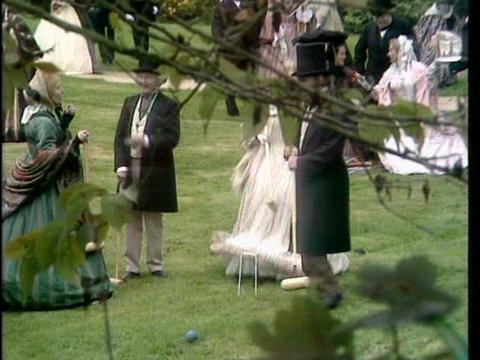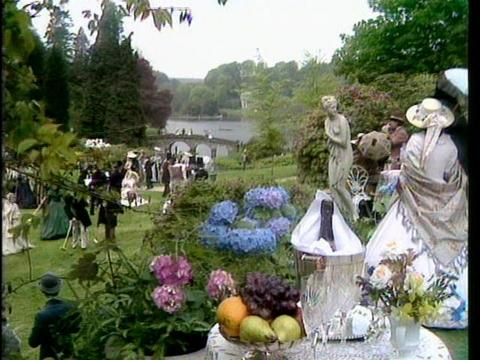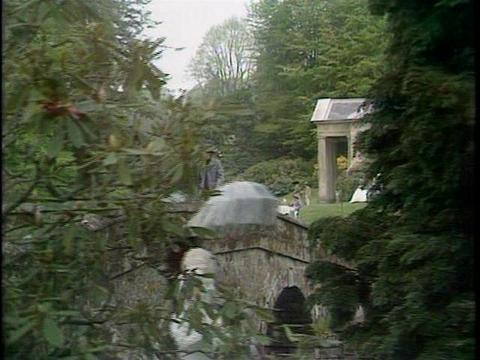Ellen and Jim Have a Blog, Too
We are two part-time academics. Ellen teaches in the English department and Jim in the IT program at George Mason University.


The Pallisers Film Cycle: A Masterpiece of Televisual Classic Novel Film Adaptation · 24 July 07
Dear Harriet,
I’m writing to tell you of one development in my film studies. I’ve decided that every day I’m home (in this house), I will spend one hour watching the 1974 Pallisers film cycle. I’m taking down the screenplay word by word stenographically, and capturing stills to match. My goal is to have an accurate transcription of this work of art so that I might write a descriptive full-length study of it.
I have now watched all 26 hours and have a sense of the whole shape of the work. Each week for more than 6 months (sometimes skipping a week, sometimes falling behind), I watched an hour. I then wrote anywhere from one to four postings describing the episode (or part as the series named them). I posted these to Trollope-l. I now intend to put these postings on this blog in a revised state as I finish genuinely studying each episode. Nowhere has this been done before.
I’ve come to the conclusion the Palliser films are a remarkable work of televisual art in the classic film mini-series adaptation subgenre (or mode). What I intend to do is to revise the postings I’ve done for Trollope-l and put them one by one on this blog. Each will be accompanied by lovely, epitomizing, characteristic, or deeply revelatory (about the human condition in the mode of this subgenre) stills.
Let me begin with providing three stills. The first appears as the initial credits (to Anthony Trollope and Simon Raven) cease: we see an picturesque Arcadia which exemplifies all that Inglis argues is central to the 1970s film adaptations of classic novels. My qualification of his thesis is the qualities he describes exemplify the TV and cinema faithful film adaptation from the 1970s through the culmination of the subgenre in the mid-1990s to early 2000s.
The figures are playing croquet and we hear music which captures the light frivolity of the game:

For after all who cares who wins? The point is to pass time pleasurably.
Then the camera pans out and we see the larger picture:

A bridge, a temple in the distance, a classical statue of a nymph, a gentlewoman seen from the back, a 19th century variation living and breathing on the classical statue.
And then the hero of the piece, the young Plantagenet Palliser (played by Philip Latham) glimpsed walking along the bridge:

Planty Pall is headed for his interview with the powerful male who controls the scene, the present Duke of Omnium, his patron.
More tomorrow night on Andrew Davies and film adaptation as such (if I have the strength).
Sylvia
--
Posted by: Ellen
* * *
Comment
- Just to say that the stills are lovely, and bring back memories for me of playing croquet as a child – games at my grandparents’ house could get quite heated on occasion, and some of the grown-ups got annoyed if anyone clipped their ball! I’m looking forward to reading the blogs.
— Judy Jul 25, 2:26am # - PS – I must just add that, of course, it is the croquet hoops themselves and the sunshine and greenness which bring back memories for me (though I’m sure there were rainy days too) – not the grand setting and costumes! I do think the combination of a beautiful country-house garden and the elaborate costumes in these stills expresses part of the mood which draws people back to dramas like this, which Inglis talks about in the essay you cited.
— Judy Jul 25, 3:56am #
commenting closed for this article
